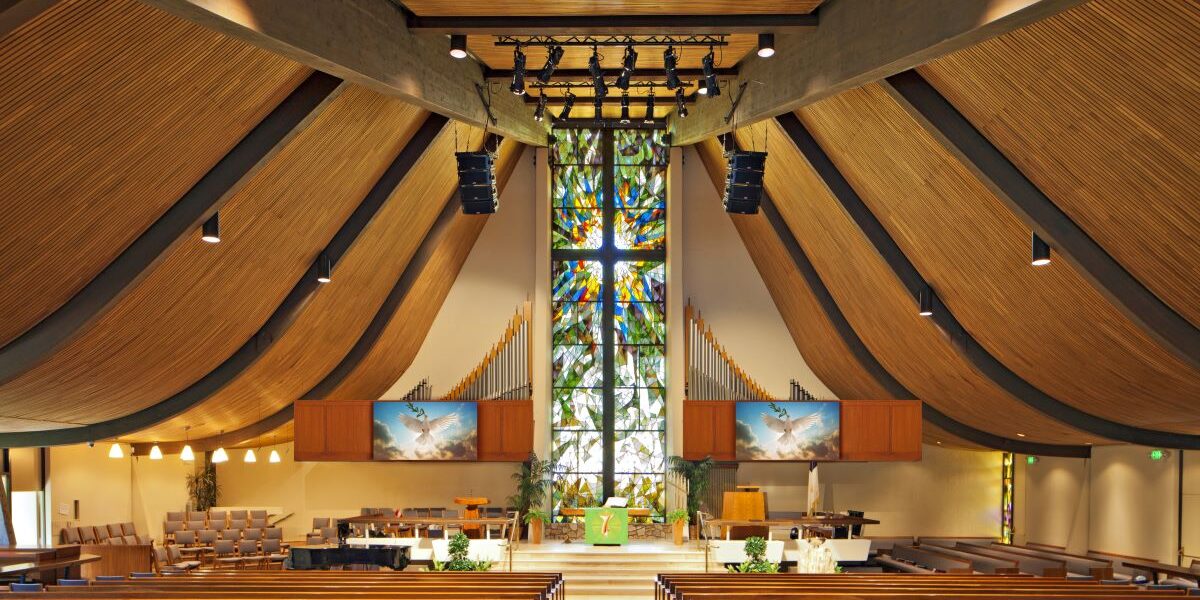In today’s landscape, houses of worship are increasingly leveraging advanced display technologies to expand their reach and streamline operations. From audio amplification systems to online platforms for remote worship, religious institutions have embraced various tools to effectively communicate messages to congregants. The integration of display technologies not only adds a sense of freshness but also increases engagement and fosters creativity among religious leaders of all faiths. However, to truly maximize their impact and ensure sustained value, these systems must strike a balance between cost-effectiveness, functionality, ease of use, and durability.
As organizations explore investments in technology to enhance their services, grow their congregations, or facilitate connectivity in secondary spaces, it is essential for their arts directors or facility managers to assess how new display products and features can deliver enhanced value and enable new engagement opportunities.
Achieving Clarity with DVLED Displays
When it comes to flexibility, quality, longevity and product variety, the latest DVLED (direct-view light-emitting diode) displays stand out as a top choice for modern buyers. These digital displays offer exceptional image clarity, vibrant color and unmatched contrast ratios, with the added advantage of virtually limitless screen size and configuration possibilities.
As buyers embark on the selection process, it’s essential to consider their specific display needs. Will the display be used indoors or outdoors, exposed to varying weather conditions and sunlight? Are they seeking a conventional large 16:9 display in 2K, 4K, or 8K resolution, or envisioning a more immersive experience with curved and flat display surfaces or even screens enveloping the chancel floors and ceiling?
DVLED display technology caters to a wide range of preferences, from standard flat screens to highly creative configurations. Its versatility is unmatched, offering corner-to-corner color, brightness accuracy and the capability for split-screen displays. Additionally, DVLED displays feature a modular design to ease maintenance and if something were to happen to the display, such as the surface getting damaged, it would likely still be able to operate with only a small defect until your support person simply removes the damaged modules and replaces them with one of the many spare boards that are provided with every DVLED system. The life expectancy of the DVLED diodes is unmatched, with most rated at 100,000 hours to half brightness.
Selecting the right DVLED display is a straightforward process, with many leading manufacturers offering bundled solutions tailored to specific needs and budgets. Buyers can choose the desired resolution, from full HD (2K) to Ultra HD (4K) and beyond (8K). The buyer will also have choices of bundled DVLED display sizes from 81 inches (measured diagonally) in a standard 16:9 aspect ratio up to 589-inches diagonal in a 32:9 aspect ratio. From there, they will also need information such as if the display will be installed inside or outside, mounted on a wall, suspended from the ceiling or mounted with a floor or rolling stand.
Moreover, system integrators can offer valuable insights into additional DVLED technologies, further enhancing the congregation’s display experience. These may include various pixel types, such as the common SMD pixels with contrast ratios ranging from 3,000 to 8,000:1, or COB MicroLED pixels that are so small, they are only about the width of a human hair, attached to very black surface boards, delivering up to 100,000:1 contrast ratio. Contrast ratios like this make DVLED images appear almost life-like.
Projecting Your Message
For organizations with limited budgets or congregations, or those seeking to minimize the visual impact of technology in worship spaces, innovative laser-based projectors present powerful display capabilities with the added bonus of adjustable screen size. While traditional projector-and-screen setups are often permanently installed, operators can achieve multi-site functionality by employing mobile screens or installing fixed screens in various rooms, so the projector can be moved.
The brightness and size of the projected image are determined by the distance between the projector and screen, providing versatility in usage scenarios. A projector suited for filling a large hall with a sizable screen one day can seamlessly transition to accommodating a smaller space with the largest screen possible the next day.
Buyers may opt for specialized projectors, such as short-throw or ultra-short-throw models, particularly suitable for smaller rooms. These projectors can be positioned within a few feet of the projection screen while delivering exceptional quality and up to 4K resolution. With an industry-standard lifespan of 20,000 hours, laser projectors used for four hours daily can maintain picture quality for over 13 years, ensuring long-term reliability with minimal change in picture quality.
Choosing the Right Operating System
Regardless of what display technology is chosen, operators should carefully consider the accompanying operating system to guarantee reliability, robust capabilities, manufacturer support and future compatibility. As an organization’s display network expands to encompass more rooms or multiple locations, it’s imperative that all displays seamlessly integrate with the same content devices, minimizing setup complexities. Some operating systems offer advanced features such as multi-display control, remote accessibility, and split-screen capabilities, enhancing overall usability.
Manufacturers offering interoperable systems enable system designers and installers to reduce complexity and may even be able to direct content from a single source to an unlimited number of screens. The advent of wireless streaming from laptops or mobile devices, along with scheduled programming via simple web-based apps, has rendered permanent content devices obsolete, further simplifying display setups.
Leading display manufacturers may offer a range of products, including DVLED screens, laser projectors, and high-quality LCD displays suitable for various messaging needs in spaces like the narthex, cry rooms, or overflow areas. With options ranging from 4K resolutions to OLED technology boasting ultra-deep blacks, LCD models cater to diverse requirements, from showcasing movies at Sunday school to broadcasting services or disseminating information on upcoming sermons and events.
For organizations employing a unified software solution, the installation of commercial-grade LCD models is crucial, as consumer versions may lack the necessary software ecosystem or capabilities. This means that even if an organization with a number of displays decides to add just one TV to one room, it should be ordered through the same professionals as their DVLED displays to ensure it is compatible and can be used as intended.
Decision-Making Time
With a plethora of options available and numerous site-specific considerations to account for, worship arts directors, site managers, and tech staff may benefit from direct conversations with manufacturers to identify optimal solutions. Key considerations include long-term support for hardware and software, integration capabilities with existing systems, and the potential for future enhancements. Establishing relationships with trusted partners and reputable brands ensures ongoing support and peace of mind for years to come.
Daniel Wheeler, DSCE is a senior hospitality account manager at LG Business Solutions USA, a leading provider of hospitality TVs in the United States and innovator in DVLED displays and other digital signage technologies, www.lg.com.












